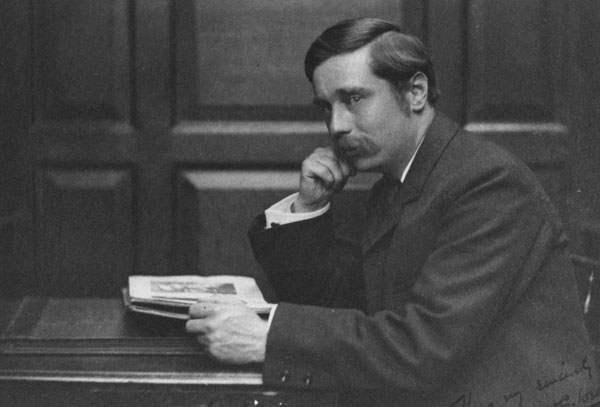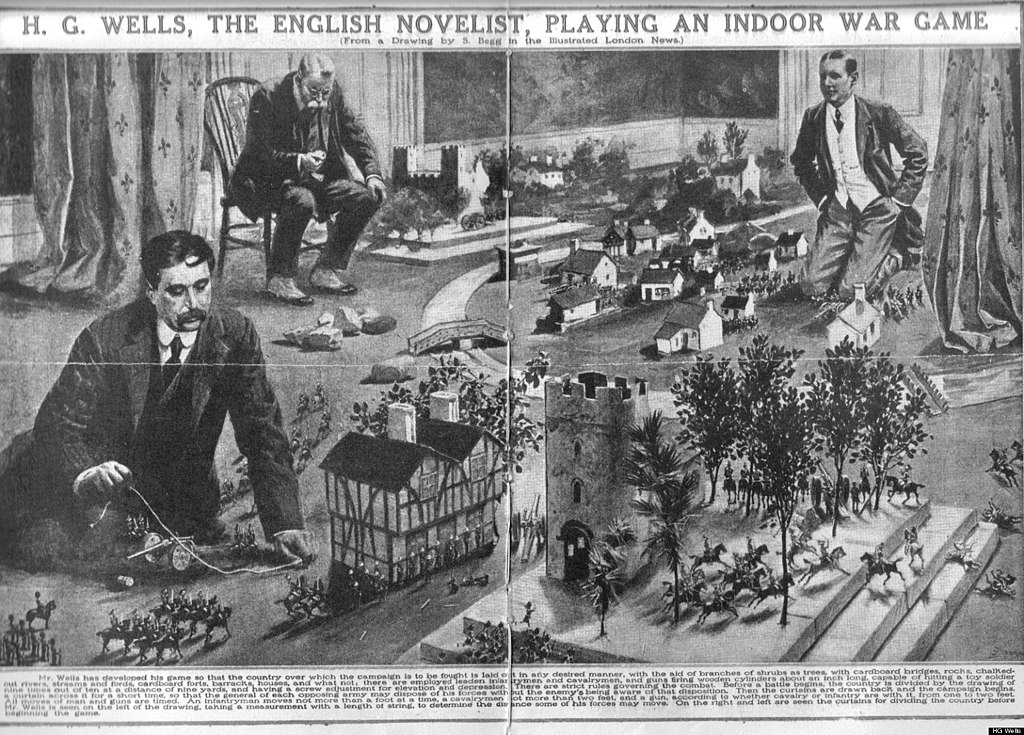Guy Stuff
Discovering H.G. Wells’ Little Wars, The First Wargame
While it’s considered somewhere between an exaggeration and an urban legend these days, the idea that Orson Welles’ 1938 reading of The War of The Worlds caused mass panic in the United States is still an entertaining piece of pop culture history. Given that World War I ended just two decades prior and the second Great War would ignite a year after the radio broadcast, though, it would be easy to forgive a nation’s genuine hysteria.
War of the Worlds
H.G. Wells, the writer of the source material and Welles’ contemporary, contributed a great deal to sci-fi and horror literature over his 79 years, yet it wouldn’t be unfair to say that The War of the Worlds overshadowed many of his other creations. Books like The Time Machine (1895), The Invisible Man (1897), and The Island of Doctor Moreau (1896) all managed to make it to Hollywood nonetheless.

H.G. Wells. Public domain image from Wikipedia.
Perhaps more surprising is the adaptation of these now-ancient works into video games. Of course, Wells’ evil tripods own the bulk of the limelight, featuring in a rather disappointing PlayStation 4 title in 2020, but even the titular character in The Invisible Man appears in a slots game at Space Casino. This five-reel title includes the bandaged visage of the protagonist Griffin, an important icon of modern horror. Such a game just goes to show how Wells’ influence has reached a great variety of mediums.
Little Wars
What many fans of gaming might not know is that Wells’ flirtation with interactive storytelling began at the beginning of the 20th century. The author produced two books on gaming, namely, Floor Games (1911) and Little Wars (1913). While niche today even by Wells’ standards, the former volume caught the eye of Dungeons & Dragons creator Gary Gygax, who introduced a reprint of Floor Games in 2004.

H.G. Wells’ (bottom left) playing Little Wars. Public domain image from Wikipedia.
Little Wars is one of the earliest examples of civilian wargaming, an activity that, now, is associated with Lord of the Rings and the Warhammer 40k franchise, among others. This type of entertainment makes use of dice and sophisticated models to simulate battles. Of course, Wells’ version of the popular hobby had much lower barriers to entry, requiring a coin, stopwatch, a piece of string, and some toy soldiers.
Melee Combat
While beyond the scope of this article, the full rules of the game are available in the original form on the Project Gutenberg site, which digitizes out-of-print books. In brief, though, players take turns to move and attack each other’s units, using a length of string to determine just how far a soldier or cannon can advance each turn. Being as fastidious as he was, Wells’ also included notes on logistics, strategy, and melee combat.
Oddly enough, the latter addition – melee, a word meaning hand-to-hand combat – was the first time the word appeared in association with gaming. Gygax adopted the terminology for the seminal Dungeons & Dragons, introducing a ‘melee phase’ for short-range units to conduct battle in. The term is used to separate fighters from ranged and magic classes, such as archers and mages.
Overall, Little Wars’ relative obscurity shouldn’t detract from the fact that the book is an influential piece of gaming history.















Recent Comments